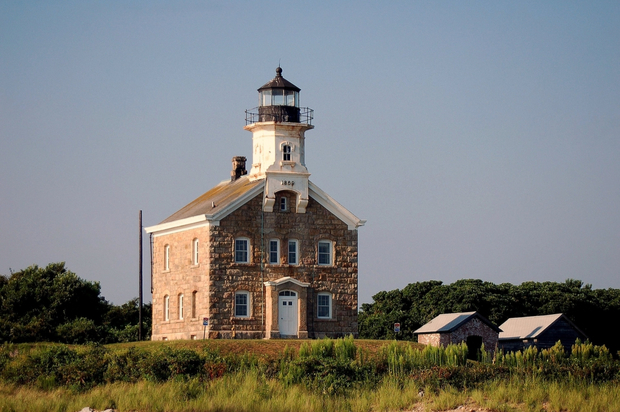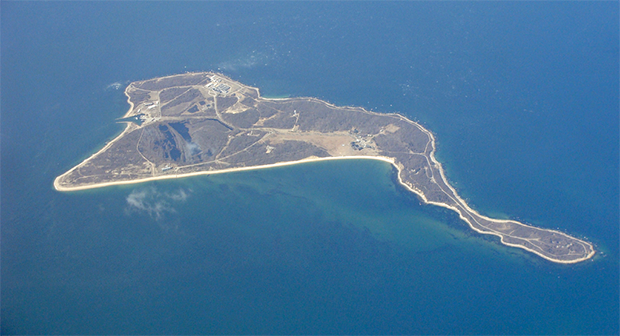While conspiracy theories and mystery surround Plum Island - mostly as a result of its tight security and top secret research - the real life Plum Island is as interesting as any made up story. While you cannot go there (it’s patrolled 24/7) there’s enough information about the island to make for some very interesting reading. Here we present some history and crazy facts about Plum Island.
Basic info
- Plum Island is an island in the Town of Southold in Suffolk County
- It is located in Gardiners Bay, east of Orient Point
- The island is about 3 miles long and 1-mile wide at its widest point
- It is 840-acres in area
- It is located 1.5 miles off of the North Fork of Long Island
- It got its name from the beach plums that grow on the island
History
- Plum Island was originally called Manittuwond by the Native Americans
- Manittuwond meant “the island to which we go to plant corn”
- The first map by a European explorer was made by Adriaen Block, a Dutch trader with the Dutch East India Company
- Block is also credited with discovering Block Island
- Between 1637 and 1639 Plumb Island had a big role in the Pequot War, considered the first armed conflict between Europeans and Native Americans
- At some point, the Montaukket tribe sold Plum Island to an Englishman in 1659 for a coat and a few tools
- It’s said that the island was where the first cannon fire was exchanged between the Continental Army and the British during the American Revolution and was the first American amphibious assault in history
- In the 1800s, private owners had plans to turn the island into a summer resort but the Spanish-American War changed that
- Fort Terry was built on the island in 1897 during the Spanish-American War
- A lighthouse was built on Plum Island in 1869
- The lighthouse faces toward Plum Gut, an intimidating inlet to navigate on the North Fork due to its strong currents
- A Boys Club formed in the early 20th Century to provide street boys something to do had its summer camp on Plum Island when it was owned by the wealthy industrialist Abram Hewitt
- Plum Island was purchased by the US government in the 1890s
- It was used as a fort during both World Wars
- A 1914 court martial took place there when Major Benjamin Koehler was accused of sexually harassing soldiers at the camp
- This case had a part in cemented a policy of intolerance against gays in the military that led to the “Don’t Ask, Don’t Tell” policy decades later
- In the early 1950s the Army set up a biological warfare research program on the island in Building 257 but it was quickly disbanded
- The Plum Island Animal Disease Center (PIADC) was established there by the United States Department of Agriculture (USDA) in 1954
- Foot-and-mouth outbreaks in Canadian and Mexican cows prompted the formation of the lab
- In 1978 there was an outbreak of foot-and-mouth disease in the lab that was contained before it reached the mainland
- Over 200 animals on the island had to be destroyed due to that outbreak - they used to live outside of the lab in pens and after that, cells were built to contain the animals
- In 2003, the government transferred operations of Plum Island to the Department of Homeland Security to better protect the facility
- A 2007 report by the DHS found 539 security system vulnerabilities, 93 of which were
- classified as “high” risk
- In 2008, an al Qaeda terrorist was caught in Afghanistan with a list of potential US targets for "mass casualty attack" including Plum Island
- Access to the island is restricted to employees only and is patrolled 24-hours a day

Plum Island Lighthouse. Photo: Shutterstock.
What Plum Island Animal Disease Center (PIADC) does
- Officially, the DHS S&T Office of National Laboratories (ONL) Plum Island Animal Disease Center (PIADC) has served as the nation’s premier defense against accidental or intentional introduction of transboundary animal diseases (a.k.a. foreign animal diseases) including foot-and-mouth disease
- PIADC is the only laboratory in the nation that can work on live foot-and-mouth disease virus
- The lab and its staff is comprised of nearly 400 employees
- The government says PIADC provides a host of high-impact, indispensable preparedness and response capabilities, including vaccine R&D, diagnostics, training, and bioforensics among others
- The stated mission of the PIADC is to protect America's livestock from animal diseases
- Foot-and-mouth disease was eradicated in America in 1929 and the only strains of it were locked in giant freezers on Plum Island
- In 2001, the United Kingdom had an outbreak of foot-and-mouth disease that resulted in an economic loss of approximately $8 billion and the slaughter of more than 6.2 million animals
- Research conducted there is said to have generated numerous breakthroughs in the diagnosis and prevention of animal diseases worldwide
- All biocontainment waste which leaves the facility must undergo biological decontamination process. These include chemical (liquid and gaseous) and physical (heat and incineration) methods
- In 2019, the lab was asked to help assess potential methods to disinfect and decontaminate surfaces from African Swine Fever (ASF) virus, a threat to America’s swine industry
- In 2002 it was reported that Plum Island’s lab had a $16.5-million annual budget
- In an abundance of caution and to prevent the spread of disease the deer that sometimes make their way by swimming to the island are killed and destroyed
- It’s key customers are listed as: U.S. Livestock Producers, National Veterinary Stockpile, National Animal Health Laboratory Network, FBI, USDA ARS and APHIS, Centers of Excellence, Private Industry, and Academia
What it doesn’t do
- The lab says that it does not perform research on human or prion progressive neurodegenerative disorders) diseases
- It also does not and has not performed research on Lyme disease
- And it does not perform research on West Nile virus; however, the facility was asked to assist when an outbreak of West Nile virus affected horses on Long Island
In books and popular culture
- “A World Unto Itself,” a book written in 2014 by a local historian and published by the Southold Historical Society tells the definitive history of Plumb Island
- Nelson DeMille wrote a best-selling murder mystery novel called Plum Island
- In The Silence of the Lambs, Hannibal Lecter refers to Plum Island in the film as "Anthrax Island”
Future of Plum Island
- In 2008, the Department of Homeland Security (DHS) directed Government Services Administration (GSA) to sell Plum Island property
- Plum Island will be replaced by a National Bio and Agro Defense Facility (NBAF) in Manhattan, Kansas and to move its operations from the Plum Island Animal Disease Center (PIADC) to NBAF
- That sale is anticipated to occur no sooner than 2023
- There is an online sales listing posted by the GSA that advertises the sale of Plum Island
- The listing includes the ferries and official vehicles in the sale
- In 2016 it was reported that the island drew the attention of developers, including the Trump Organization with an idea to build a golf course
- In 2019, Representative Lee Zeldin co-authored language in a Department of Homeland Security appropriations bill to restrict the sale of the island and repeal the requirement to sell Plum Island
- The amendment to the bill seeks to limit “future use of the island for the purposes of research, education, and conservation”
- The Town of Southold has zoned the island so that it cannot be developed as a resort or luxury home developments and preserves most of the open space
- The code also dictates that the Plum Island center can only be used for similar use - like research











